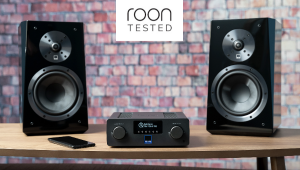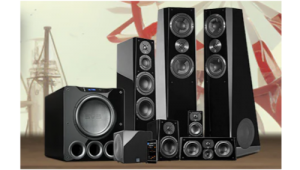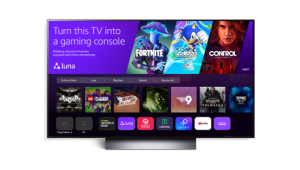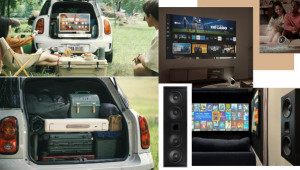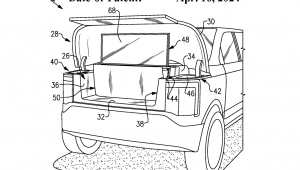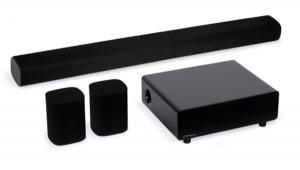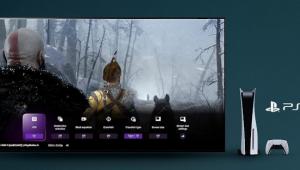In June 8,1949 George Orwell's 1984 was published.
In 1975, while in High School I read it for the first time.
It was disconcerting and scary, but improbable that by 1984 (nine years later) that would be our reality.
Techno Fascism is at the door folks. What's worse we, the consumer, are spending our hard earned money to allow Big Brother (Government and Business) to monitor our lives so as to "Guide us" into the collective good.
By 2024, in the seventy fifth anniversary of 1984, George will rise from his grave and yell BOO! I told you so.
Defining the Internet of Things Page 2
Evans: I believe motion-based interfaces will play a part in the larger orchestration and control of things. For example, when you use a modern computer today, you may actively switch between using the keyboard, mouse, a touchscreen, and even voice input. All these ways to interact with technology work together. One does not necessarily obsolete the other. Motion-based interfaces will play a role where they complement other forms of control, or when those other forms of control are simply not appropriate. I believe gesture-based technology will play a significant role in two areas that are growing very quickly: augmented reality (AR) and virtual reality (VR).
S&V: Centralized control is an appealing notion but the reality seems to be one of extreme fragmentation with many devices and control systems vying to be the main hub of today’s smart home. What system or device will be the hub for controlling connected devices in most homes over, say, the next 5-10 years?
Evans: A lot of this depends on the timeframe. Within the next few years we will see set-top boxes, televisions, wireless access points, and dedicated hubs all vying to be the main hub in today’s smart home. However, I think the days of the hub are coming to an end. Again, thanks to Moore’s law, more and more intelligence is being placed inside the devices or “things” themselves. Consider that a $5 musical greeting card has hundreds of times more computing power than the first general-purpose computer did only a few decades ago. It is quite reasonable to assume that everyday things will have significant computing power and intelligence embedded within them very soon.
A single hub in a home is a point of failure. If the hub goes down, all of your things go down. A better model (which is the fundamental design of the Internet itself) is to have no single point of failure.
While this will be dwarfed by the amount of vast intelligence in the cloud, it will be enough for these things to orchestrate their behaviors, exchange information locally, and make decisions as one. This is the difference between a group of disparate things and a system of things working together. I see this is a necessary evolution, as it will be impossible for one hub to manage every type of thing that exists, or will exist. A better approach is for these things to have standard protocols and discovery mechanisms — meaning they can tell other things what they are capable of doing via interrogation — so the Internet of Things can scale. A single hub in a home is a point of failure. If the hub goes down, all of your things go down. A better model (which is the fundamental design of the Internet itself) is to have no single point of failure.
S&V: Where do you see video displays heading in the smart home? How soon before large-scale projection and/or roll-up “video walls” become commonplace? Or do you see something different emerging?
Evans: We are only a few years away from rollup displays, the thickness of wallpaper, being very affordable. We are even seeing 3D printing of flexible video displays that can roll up. However, augmented reality is catching up quickly. Although augmented reality and virtual reality headsets are quite bulky by tomorrow’s standards, Moore’s law once again dictates that they will rapidly become smaller, lighter, and cheaper. Within a decade it is reasonable to assume that we will have normal looking glasses, capable of displaying just about any image, which begs the question: If everyone can have a personal display in front of their eyes, wherever they are, will we need large displays that are fixed to the wall?
S&V: Let’s turn to audio, particularly the object-based immersive sound systems like Dolby Atmos, DTS:X, and Auro3D that enhance realism by wrapping viewers in a cocoon of life-like sound. Today’s state-of-the-art multi-speaker systems can be very complicated and tend to consume lots of space. What do you see on this front as we move into the future?
Evans: Smart speakers and audio systems can also take advantage of a lot of the same types of technologies and sensors being embedded within IoT devices. I see no reason why speakers couldn’t be embedded with sensors that detect objects, relative location, movements, humidity, and other factors that affect sound quality. The same speakers could easily talk amongst themselves to “compare notes” on sound quality and make adjustments in real-time to provide optimal sound quality based on the listener’s location.
S&V: What types of smart-home and entertainment technology will become ubiquitous over the next 10-20 years?
Evans:There are a few that come to mind. The first is robotics. Just like we have multiple connected devices in our homes today, we will have multiple robotic devices in our homes tomorrow. But these will not be the unintelligent robots of yesterday — they will be machines with vast amounts of intellect because they are connecting to all that intelligence in the cloud. Robots will become significantly more useful than they are today.
The virtual assistant of tomorrow will — with your permission — know you intimately and be able to do things on your behalf.
The second — and this may take the form of a robotic device in some cases — is the virtual assistant. And I don’t mean an assistant where you simply ask a question about the weather, but an assistant that actually does things for you: responds to your emails, books your travel, schedules your meetings, pays your bills, and more. The virtual assistant of tomorrow will — with your permission — know you intimately and be able to do things on your behalf.Finally, just as we’ve digitized many physical things — books, movies, music — we are now digitizing more and more of the physical world through technologies such as virtual reality and augmented reality. In just a few years, AR and VR headsets will allow for a whole host of new entertainment experiences in the home as they get lighter, smaller, cheaper, and capable of delivering higher-quality experiences. Virtual travel, virtual shows, virtual gaming, and much more will become commonplace.
S&V: Let’s talk about privacy and security for a minute. What are your top concerns as we move into the Age of IoT?
Evans: Security and privacy are the top two concerns I have when it comes to IoT. I view them as different sides of the same coin. I believe that if you compromise one of them, you automatically compromise the other. While I think IoT has a profound possibility to tackle some of our major challenges going forward — challenges with food, water, climate, education, healthcare, etc. — we must be careful not to rush forward with solutions, without considering security and privacy first.
It is easy to blame the device, or the manufacturer of the device, when there is a security, or privacy compromise. However, we must also bear part of the burden in ensuring our own security and privacy. It’s astonishing how many people buy connected devices and never change the default credentials. We need to continue to educate ourselves on how best to secure our smart devices, and if that device is incapable of being sufficiently secured, look elsewhere and let that company know that that is not acceptable.
S&V: I’d like to close with a prediction. Looking a couple of decades down the road, what will the home of the future look like?
Evans: One of the key traits of the smart home of the future is that you will not know it is smart simply by looking at it. Technology will be everywhere, but nowhere. The home of the future will adapt to you, instead of you adapting to it as we do today. As artificial intelligence, machine learning, and deep learning mature, they will become embedded more and more in everyday things. These intelligent things will work together to predict your needs. They will learn when you’re coming home, when you are leaving, how you like the comfort of your house, how you like your lighting, and automatically make adjustments.
The smart home of the future will also notice anomalies. If you go to bed without locking your front door, the smart home will do that automatically for you. In the future, we will not think of it as a smart home, but simply as a home. A smart home will simply be an expectation. Today we don’t question whether a home comes with electricity or running water — it is simply an expectation. The same will be true of the smart home of the future: We will simply expect it to be smart.
- Log in or register to post comments








